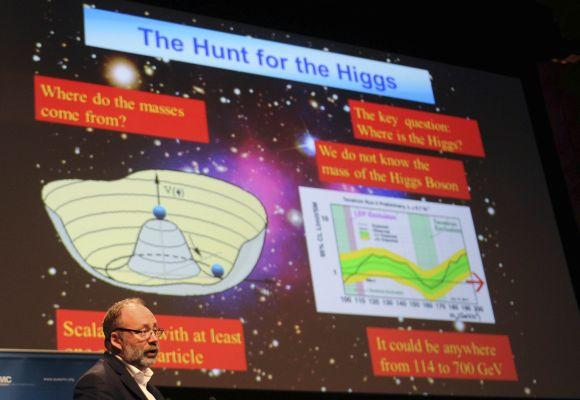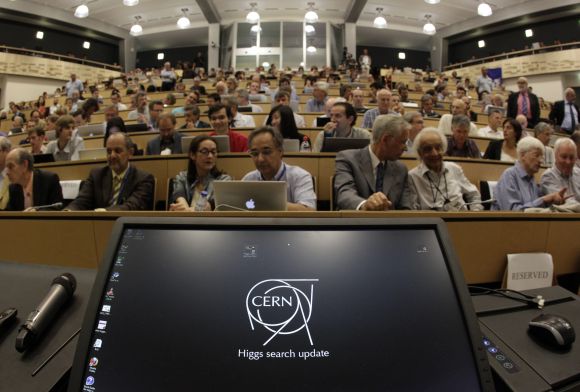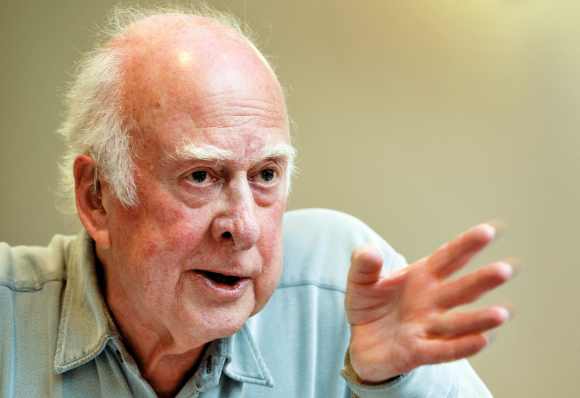
The five-decade-long hunt for the elusive Higgs boson or the 'God particle' has reached a milestone, with scientists at the CERN claiming on Wednesday that they have discovered a new subatomic particle that looks like the one believed to be crucial for formation of the universe.
Joe Incandela, leader of one of the two independent teams at the world's biggest atom smasher, told a packed audience of scientists at the European Center for Nuclear Research (CERN) that the data has reached the level of certainty needed for a discovery.
But he has not yet confirmed that the new particle is indeed the tiny and elusive Higgs boson, which is believed to give all matter in the universe size and shape.
"We have reached a milestone in our understanding of nature," said CERN Director General Rolf Heuer.
"The discovery of a particle consistent with the Higgs boson opens the way to more detailed studies, requiring larger statistics, which will pin down the new particle's properties, and is likely to shed light on other mysteries of our Universe," Heuer said.
...

Meanwhile, the second team of physicists also claimed they have observed a new particle, probably the elusive Higgs boson.
The announcements were made to huge applause by scientists including Peter Higgs who first suggested the existence of the particle in 1964.
In a statement, CERN said the particle they found at LHC is "consistent with (the) long-sought Higgs boson," but more data was needed to identify the find.
Higgs said in a statement said: "I never expected this to happen in my lifetime and shall be asking my family to put some champagne in the fridge."
...

"The discovery of a particle consistent with the Higgs boson opens the way to more detailed studies, requiring larger statistics, which will pin down the new particle's properties, and is likely to shed light on other mysteries of our Universe," Heuer said.
Finding the Higgs would validate the Standard Model, a theory which identifies the building blocks for matter and the particles that convey fundamental forces.
Higgs boson is believed to exist in an invisible field created by the Big Bang some 13.7 billion years ago. When some particles encounter the Higgs, they slow down and acquire mass, according to theory. Others, such as particles of light, encounter no obstacle.
For 50 years, finding the missing Higgs was one of the most puzzling riddles of Quantum Physics, and led scientists to set up the 3 billion euros Large Hadron Collider, the world's biggest and most powerful particle accelerator.
The 27-km looped pipe set up in a tunnel 100 metres underground on the Switzerland-France border created artificially simulated conditions similar to the Big Bang, triggering collisions between accelerated particles.
In the LHC experiment, two beams of protons are fired in opposite directions to smash millions of particles into each other every second, a set up that recreats conditions that existed a fraction of a second after the Big Bang.
This is the time when the Higgs field is believed to have come into play. The Higgs particles are believed to have transferred mass to the millions of other particles in the process of creation of the universe.
...